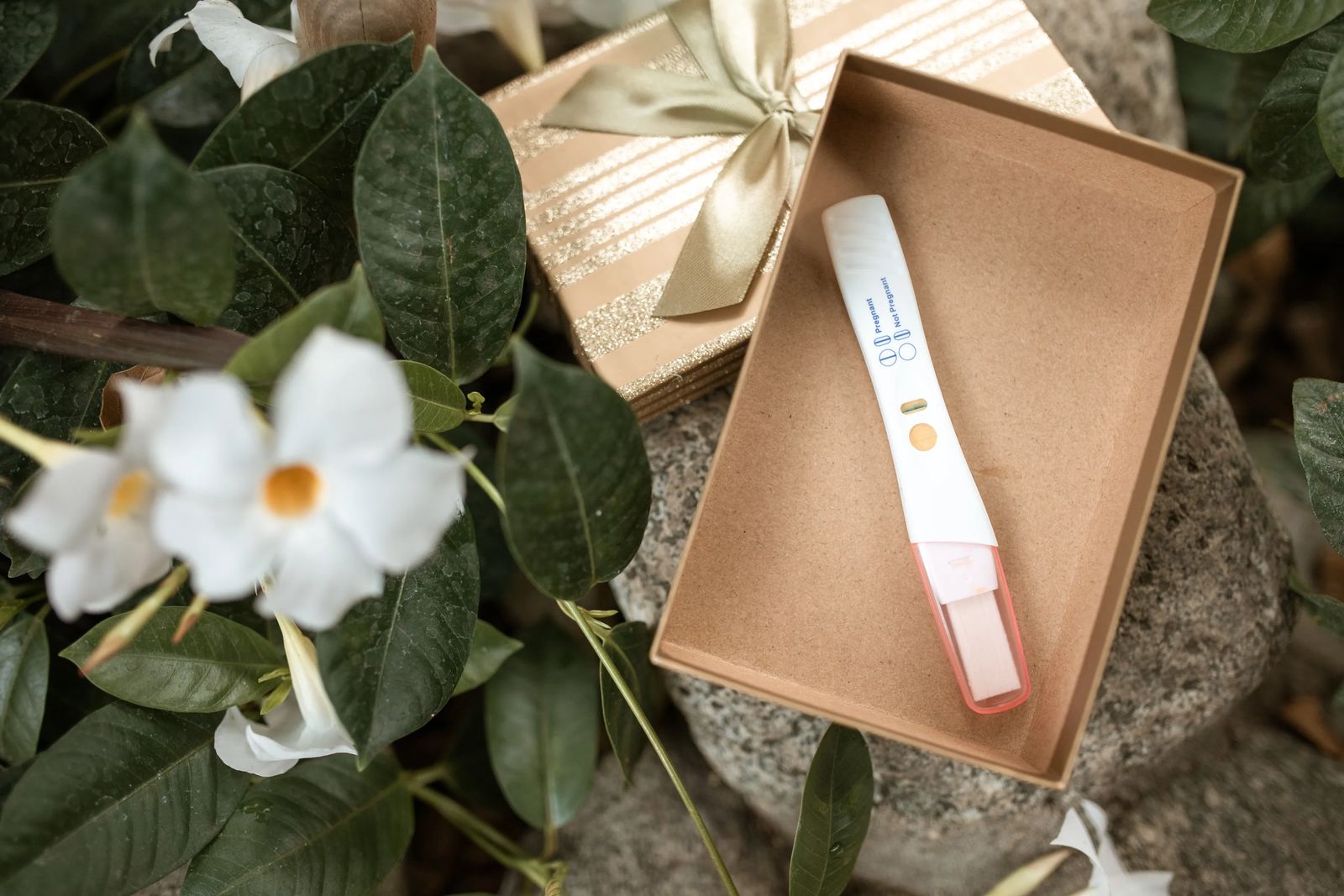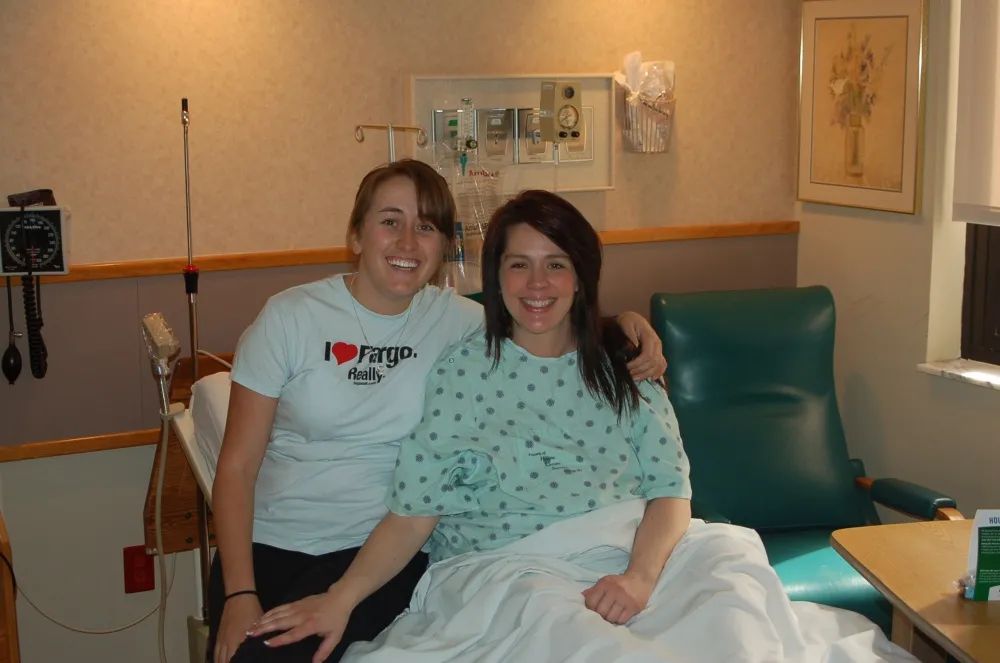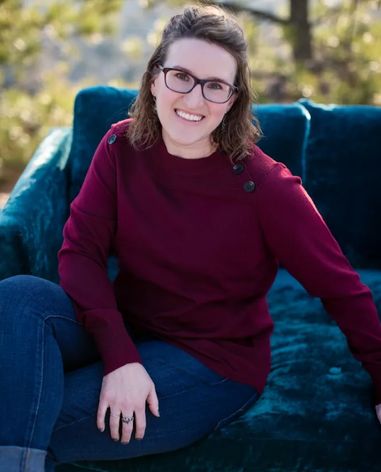
Photo by RODNAE Productions via Pexels
The Evolution of Growing a Family: Gestational Surrogacy
June 2022
by rebecca stewart
The path to parenthood is not always (not often?) an easy one with a straight line from hopes and dreams to fruition. Struggles with infertility are incredibly real and difficult for more families than we might think. The Mayo Clinic tells us that, in the United States, 10-15% of couples are infertile. Yet, despite increasing levels of awareness, those who struggle with infertility often do so within a quiet bubble of isolation.
As time has marched on and progress has been made, the ways families grow have evolved. As a society, we are probably most attuned to adoption and IVF (in vitro fertilization) as alternative methods of growing one’s family, but what about gestational surrogacy?
We were fortunate to have the opportunity to talk with Kaci Moore, a former gestational surrogate (four times over) and current surrogate coordinator. Come along as we explore this unique journey to parenthood that quite literally takes a village to pull off.
But first…
Defining Gestational Surrogacy:
In gestational surrogacy, the child is not biologically related to the surrogate mother, often referred to as a gestational carrier. Instead, the embryo is created via in vitro fertilization (IVF), using the eggs and sperm of the intended parents or donors, and is then transferred to the surrogate.
This form of surrogacy is sometimes also called “host surrogacy” or “full surrogacy.” In most cases, at least one intended parent is genetically related to the child, and the surrogate is not. This makes gestational surrogacy less legally complicated than other forms of surrogacy because stepparent or second-parent adoption is not required.
- “What is Gestational Surrogacy, How it Works” | Surrogate.com
People who might consider gestational surrogacy:
- People who have struggled with infertility
- Hopeful single parents
- Same-sex couples
- People who don’t want a genetic link between the surrogate and their child
- Anyone unable to safely carry a pregnancy to term
Meet Kaci Moore
Kaci is a born and raised Montanan, having lived in Billings for the last 21 years with her husband and their four children, who are now grown. Her surrogacy journey began in 2005, about a year and a half after their fourth child was born. The couple determined that four was enough for them, but Kaci was still young, had four good pregnancies, and despite knowing their family was complete, she “kind of wanted to be pregnant again.” And so, the research began.
Research that was not as easily done as it would be today. In fact, as Kaci began reaching out to various agencies, as soon as they heard she was from Montana, Kaci laughs, “I might as well have said I lived on the moon.” She adds that surrogacy tends to be more prevalent in the bigger (more populated) states, like California. At the time, Montana didn’t have a go-to agency to facilitate these journeys, which ultimately led Kaci to an agency in California. (Kaci would work with two different agencies and a reproductive attorney – who is also a friend – to connect her with Intended Parents over her eight-year surrogacy journey).

Intended Parent, Carolyn Jensen with Kaci Moore
Today, Kaci has been an Associate Surrogacy and Donor Coordinator Recruiter for EDSI (Egg Donor & Surrogacy Institute) in Beverly Hills, California, for the last three years. Essentially, she recruits and helps incoming women looking to become a surrogate. Kaci elaborates, “I walk them through the screening process, help them with all the requirements and paperwork, and coordinate with IVF clinics to get all of that facilitated.” As a coordinator, Kaci has worked through agencies in California and offered independent consulting, which she’s been doing more of in the last year. Kaci has helped women across the U.S. with their surrogacy journeys, including some Montana women. She is the person she wishes she had when her surrogacy journey began; someone to come to with any questions.
Becoming a Gestational Surrogate
For women interested in gestational surrogacy, Kaci says:
- Research, research, research! You will be overwhelmed with the amount of information you’ll find, but it’s imperative that you do your research.
- Research the agency- Make sure that all your needs will be met along the way. Establish that you’ll have a core support system in that agency.
- Ask yourself- How important is it that I’m done with my own family? Weigh the risks (of IVF and possibly developing reproductive issues of your own).
- Consider the what-ifs.
- If you’re able to, have a mentor. Kaci adds, “That’s why I’m so passionate about it now; for me, I pride myself on being that go-to person.”
- Plan on 18 months (including pregnancy) from start to finish.
You’ve done your research, you’ve connected with an agency, now let’s look at the process of becoming a candidate (Kaci notes that it’s more complex and involved than one might think, “you’re pulling back a lot of layers.”):
- No red flag pregnancy complications in your history (no pre-term deliveries, preeclampsia, gestational diabetes, placenta previa, etc.).
- Age- Between ages 21 and 40.
- If you’re closer to the older end of the spectrum, you’d have to have had a more recent pregnancy.
- Have had at least one healthy pregnancy and delivery and are raising that child.
- All pregnancy records are requested at the time of the screening process.
- A psychological evaluation is also a standard requirement.
- It’s standard practice that surrogates aren’t allowed to be on any anxiety medication or antidepressants. Kaci adds that you have to be off them for 3-6 months prior to qualify.
- The IVF clinic- After being reviewed by the clinic and receiving medical clearance comes official matching with Intended Parents (IP) and legal contracts.
- Travel to IVF clinic (Kaci traveled to California for each of her procedures because that’s where all her IPs were working with those clinics).
The Matching Process
Everything was done on paper in Kaci's day, but now digital profiles are created for both the surrogate and intended parents. Kaci emphasizes that if you are working with an agency, a good one will consider your preferences from the get-go.
When profiles are being presented, if both parties are interested, a match call is facilitated via Zoom to make sure there is a connection. It’s rare, says Kaci, for a match call to go sideways, but if it does, the surrogate would go back to her coordinator and the drawing board. It is 100 percent up to the surrogate what type of parents she wants to work with.
The Village
As we mentioned earlier, bringing these precious beings into the world takes a whole village; here’s who makes up that surrogacy team:
- The surrogate and her husband/significant other (if she is a single surrogate, she needs to have a support person/system in place, whether mom, sister, or best friend…)
- The intended parent(s)
- Often, an agency
- Surrogate Coordinator
- Case Manager
- IVF Clinic Team (including a reproductive endocrinologist and the nurse who coordinates the medical calendar)
- Attorneys for both parties
- Psychologist
- Potential donors (not on the frontlines of the process but are often still a piece of the puzzle)
- Labor and Delivery team
Ah yes, the labor and delivery team. You’ve researched, done the evaluations, matched, had successful embryo transfers, and a healthy pregnancy; it’s time to bring this baby (these babies!) into the world! When asked if IPs are in the delivery room, Kaci firmly responds, “Always.” Kaci had all vaginal deliveries with her own pregnancies, but as a surrogate with three sets of twins and a singleton, she had four C-sections. All babies were delivered in Billings at St. Vincent Healthcare, where Kaci says, “They were so lovely and so great to work with and welcoming with this as a surrogacy and not an adoption. They made it a great experience for me and the intended parents.”
The Emotional Impact
When asked how these experiences were emotionally different from her own pregnancies, Kaci notes that this is one of the most common questions she’s asked and that, for her, “I had done enough research, and I knew in my heart that I was doing this for a blessing for another family.” She adds that having no genetic link also made a difference, and “from an emotional standpoint, I just never established a connection like I did with my own children; I felt like an aunt, really.”
But the surrogate and her emotions are not the only ones in play. For Kaci and her husband, their entire family needed to be a part of the process. Their children were very much included, ensuring they understood and felt comfortable. It’s something, Kaci shares, that they were prideful of when talking about mom being a surrogate and what surrogacy meant to them as young people growing up, and something they still talk about.
And, of course, there are the people for whom this is being done, the intended parents. Kaci shares that the parents she carried for had incredible and compelling stories, and she recalls the first call she had with IPs from Australia. The intended mom said, “I can’t believe there are people in the world that would even do such a thing, and I am so grateful to connect with you.” We’ve always known that it takes a village to raise a family, and sometimes it also takes one to make that parenting dream a reality.
Originally printed in the June 2022 issue of Simply Local Magazine
Never miss an issue, check out SLM's digital editions here!





